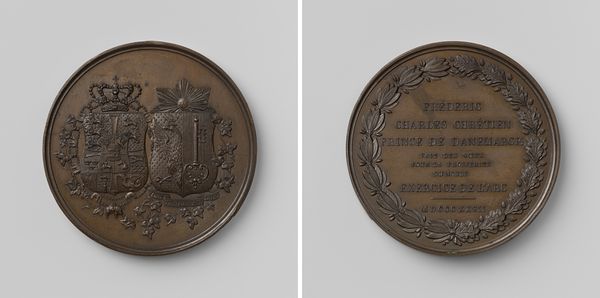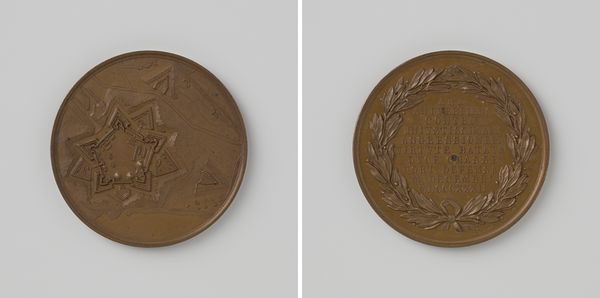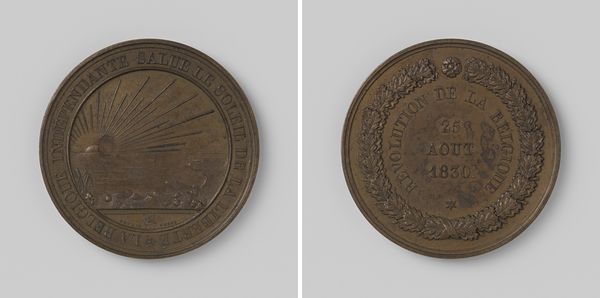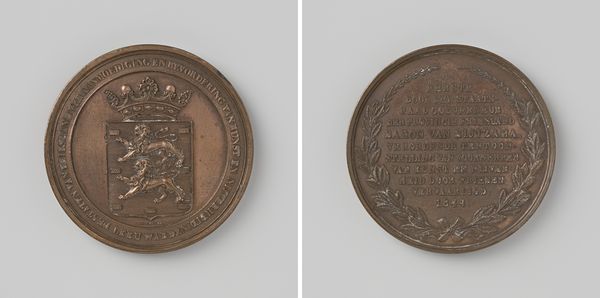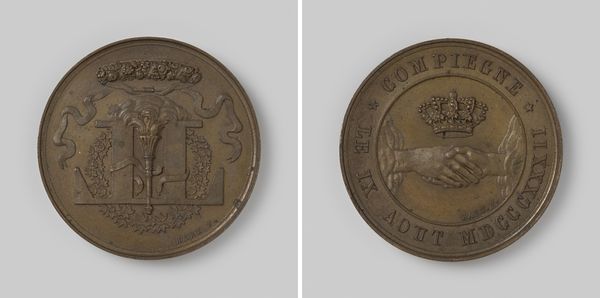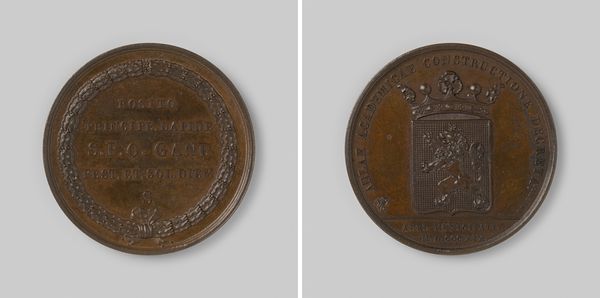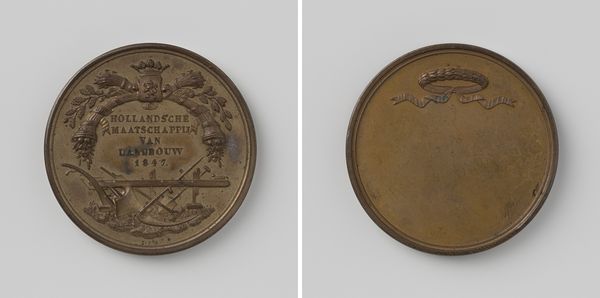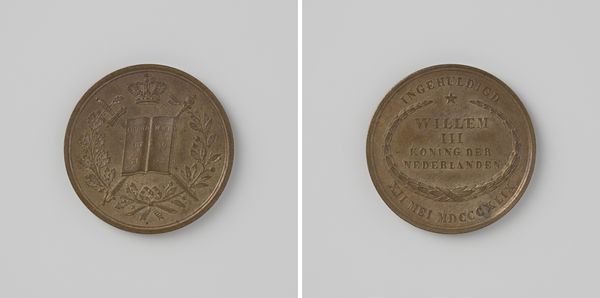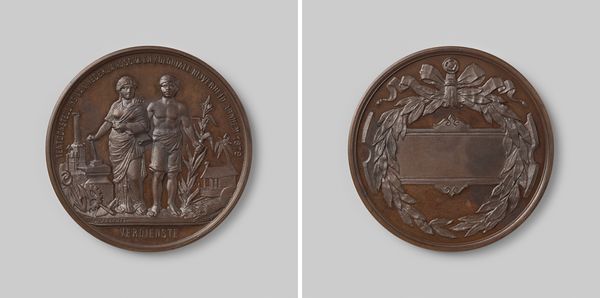
Queen Victoria's War Medal for the Afghanistan and Beluchistan Expedition, 1840–42 1842
0:00
0:00
print, metal, relief, bronze, sculpture
#
medal
# print
#
metal
#
relief
#
bronze
#
ancient-mediterranean
#
sculpture
#
decorative-art
Dimensions: Diameter: 1 7/16 in. (37 mm)
Copyright: Public Domain
Editor: Here we have Queen Victoria's War Medal for the Afghanistan and Beluchistan Expedition, created around 1842 by William Wyon. It is quite small, and bronze – it has a somber yet stately feel. How should we approach our understanding of this medal? Curator: Let's start by thinking about the bronze itself. Why was this particular metal chosen? Was it about accessibility, availability, or something else entirely? Its materiality dictates its use. Consider, too, how the relief was made; the labor, skill and time involved in producing multiples. Editor: That's a great starting point. Bronze is definitely more common than gold, and makes this accessible. What was the purpose of manufacturing this item, what were its functions in culture? Curator: Think about its creation in the context of Victorian England. A rising imperial power needing to reinforce a political position and project legitimacy of military endeavor. Medals were awarded, usually, to create national sentiment and as objects of recognition, driving further enlistment and maintaining political and financial interest for the East India Company's aims. Editor: So the bronze material and mass-production process serve both practical and propagandistic functions, cheap to produce and distribute but symbolically resonant. The inscription is a reminder of these colonial places. It almost seems... cynical? Curator: Precisely! That tension is inherent. The object transcends simple glorification when we start breaking down how its means of production reveals these complicated layers of societal impact and the function of war. So what have you found most revealing looking at it through that lens? Editor: The thought that an object of honour is still enmeshed with hard work and the wider machinery of colonial expansion and economic factors... that its symbolism served multiple functions! Curator: Exactly. Seeing beyond the surface is how objects become important archives for us.
Comments
No comments
Be the first to comment and join the conversation on the ultimate creative platform.
